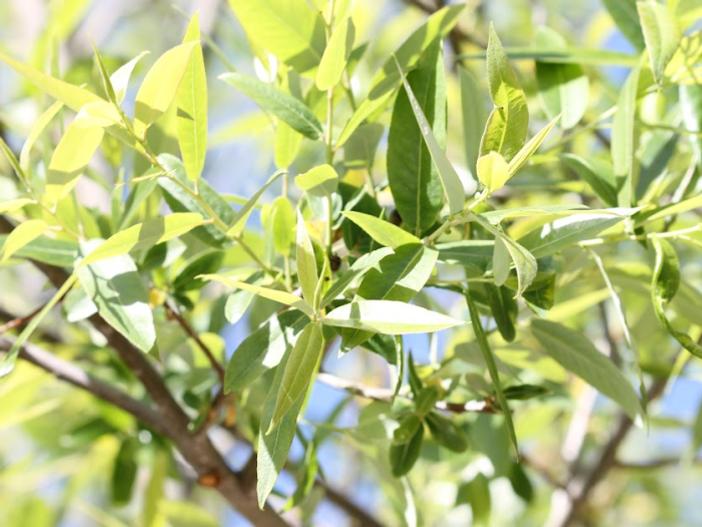Red Willow
(Salix laevigata)
Red Willow (Salix laevigata)
/
/

Photo by Easyscape
CC BY-SA 4.0
Image By:
Photo by Easyscape
Recorded By:
Copyright:
CC BY-SA 4.0
Copyright Notice:
http://creativecommons.org/licenses/by-sa/4.0/ | CC BY-SA 4.0





























































Estimated Native Range
Summary
Salix laevigata, commonly known as Red Willow, is a deciduous tree native to riparian zones, wetlands, and occasionally to drier upland areas in Oregon, California, Nevada, Arizona, and Northwestern Mexico. It is a medium-sized tree that can reach up to 45 feet (14 meters) in height and is often found along riverbanks where it plays a crucial role in stabilizing the soil and providing habitat for wildlife. The Red Willow’s bark is typically ridged and grayish, but it can exhibit a reddish hue as it matures. The tree’s growth form is quite variable, with multiple winding trunks that may grow upright or horizontally along the ground before curving upwards. This species is a key host plant for numerous insect species and serves as a foundational element in its native ecosystem.
The Red Willow is valued for its adaptability to wet environments and its ability to grow quickly. It is often used for streambank stabilization and restoration projects. The tree’s yellow flowers appear in drooping catkins, which are particularly showy in the spring when female trees produce fluffy, cotton-like seeds that disperse in the wind. Flowering occurs from December through June, with the tree mostly leafless in winter but capable of leafing out during warm periods. In cultivation, Red Willow thrives in full sun to partial shade, requiring medium to high water levels and soils with good drainage. While it is not commonly used in ornamental horticulture, it is an excellent choice for naturalized plantings and wildlife gardens.CC BY-SA 4.0
The Red Willow is valued for its adaptability to wet environments and its ability to grow quickly. It is often used for streambank stabilization and restoration projects. The tree’s yellow flowers appear in drooping catkins, which are particularly showy in the spring when female trees produce fluffy, cotton-like seeds that disperse in the wind. Flowering occurs from December through June, with the tree mostly leafless in winter but capable of leafing out during warm periods. In cultivation, Red Willow thrives in full sun to partial shade, requiring medium to high water levels and soils with good drainage. While it is not commonly used in ornamental horticulture, it is an excellent choice for naturalized plantings and wildlife gardens.CC BY-SA 4.0
Plant Description
- Plant Type: Tree
- Height: 25-50 feet
- Width: 15-35 feet
- Growth Rate: Rapid
- Flower Color: N/A
- Flowering Season: Spring
- Leaf Retention: Deciduous
Growth Requirements
- Sun: Full Sun, Part Shade
- Water: Medium, High
- Drainage: Medium, Slow
Common Uses
Bee Garden, Bird Garden, Butterfly Garden, Deer Resistant, Erosion Control, Hummingbird Garden
Natural Habitat
native to riparian zones, wetlands, and occasionally to drier upland areas in Oregon, California, Nevada, Arizona, and Northwestern Mexico
Other Names
Common Names: Polished Willow
Scientific Names: Salix laevigata , Salix laevigata var. araquipa , Salix bonplandiana var. laevigata , Salix laevigata var. laevigata , Salix laevigata var. congesta , Salix laevigata var. angustifolia , Salix laevigata f. araquipa , Pleiarina laevigata , Salix congesta , Salix laevigata f. ariquipa
GBIF Accepted Name: Salix laevigata Bebb